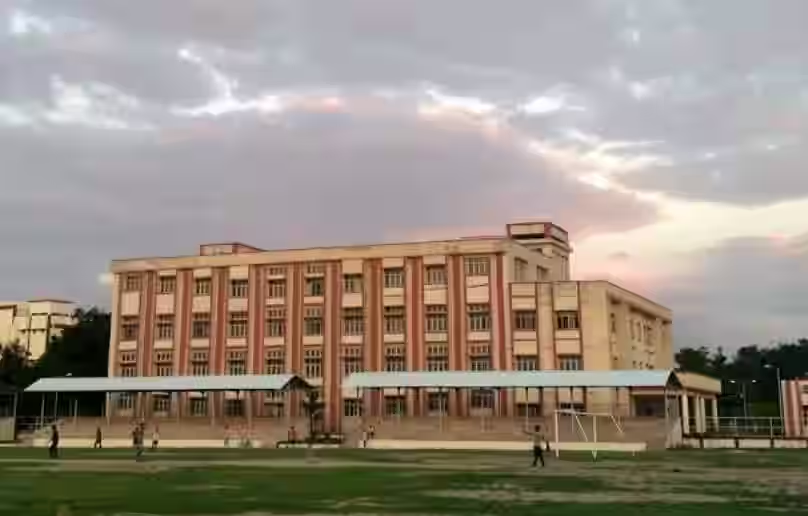Banaras Hindu University (BHU), one of India’s largest and oldest residential universities, is renowned not only for its academic excellence but also for its impressive infrastructure. Spanning over 1,300 acres along the banks of the Ganges, BHU combines historical significance with modern amenities. In this comprehensive overview, we will explore the various facets of BHU’s infrastructure, including its campus, facilities, hostels, and classrooms, showcasing how they contribute to a vibrant learning environment.
NEED HELP?

1. BHU Infrastructure: A Unique Blend of Nature and Heritage
BHU’s Infrastructure is a stunning amalgamation of natural beauty and architectural marvels. Established in 1916 by Pandit Madan Mohan Malviya, the university’s campus is steeped in history and cultural richness. The expansive grounds are dotted with lush gardens, ancient trees, and vibrant flora, creating a serene environment that encourages learning and reflection.
1.1 Architectural Wonders
The campus is home to several iconic buildings, including the Vishwanath Temple, the Bharat Ratna Dr. B.R. Ambedkar Auditorium, and the Central Library. These structures are not only functional but also serve as symbols of the university’s commitment to preserving Indian heritage. The blend of Indo-Saracenic and modern architectural styles offers a unique aesthetic experience, making the campus an inspiring place for students and visitors alike.
1.2 Green Spaces and Recreational Areas
The campus features ample green spaces, parks, and recreational areas that promote a healthy lifestyle. Students often gather in these spaces to study, socialize, or unwind. The proximity to the Ganges adds to the tranquil ambiance, providing a perfect backdrop for contemplation and relaxation. This environment plays a crucial role in the overall well-being of students, fostering both mental and physical health.
2. Facilities: Comprehensive Support for Students
BHU’s infrastructure goes beyond the physical layout; it encompasses a range of facilities designed to support students in their academic and personal growth.
2.1 Libraries and Research Centers
The university boasts a vast library system, with the Central Library being a standout feature. Housing millions of books, journals, and digital resources, it serves as a hub for research and study. Specialized libraries for different faculties ensure that students have access to the resources they need for their academic pursuits.
Additionally, BHU is home to several research centers and laboratories equipped with cutting-edge technology. These facilities enable students and faculty to engage in innovative research, contributing to advancements in various fields.
2.2 Sports and Recreational Facilities

Recognizing the importance of physical fitness, BHU provides a range of sports facilities, including fields for cricket, football, and basketball, as well as indoor sports complexes for badminton and table tennis. The university also encourages participation in various sports events and competitions, fostering a spirit of teamwork and healthy competition among students.
2.3 Health and Wellness Services
BHU prioritizes the health and wellness of its students. The university has a well-equipped health center that offers medical services, counseling, and wellness programs. Regular health check-ups and awareness campaigns are conducted to ensure that students maintain a healthy lifestyle.
3. Hostels: A Community Experience
BHU offers a variety of hostels catering to both male and female students. The hostels are designed to provide a comfortable living environment, promoting community bonding and personal development.
3.1 Comfortable Living Spaces
The hostels are equipped with essential amenities such as Wi-Fi, study areas, and common rooms. Each room is designed to provide a conducive atmosphere for studying while ensuring comfort. This attention to detail helps students feel at home, even when they are miles away from their families.
3.2 Community Life
Living in a hostel at BHU is more than just accommodation; it is an enriching experience. The diverse student population fosters cultural exchange and collaboration. Various extracurricular activities, events, and festivals are organized, allowing students to build friendships and create lasting memories.
3.3 Safety and Security
Safety is a top priority in BHU’s hostels. Security measures, including surveillance and strict entry protocols, ensure a safe environment for all residents. This commitment to safety allows students to focus on their studies without worrying about their well-being.
4. BHU Infrastructure Classrooms: A Hub of Innovation and Learning
BHU’s classrooms are designed to facilitate interactive and engaging learning experiences. The university recognizes that the quality of education is closely linked to the learning environment.
4.1 Modern Teaching Aids
Equipped with modern teaching aids such as projectors, smart boards, and audio-visual systems, classrooms at BHU promote dynamic learning. Faculty members employ innovative teaching methods that encourage student participation and collaboration. This approach not only enhances understanding but also prepares students for real-world challenges.
4.2 Seminar Halls and Lecture Theaters
In addition to traditional classrooms, BHU offers seminar halls and lecture theaters that accommodate larger groups. These spaces are used for guest lectures, workshops, and conferences, providing students with opportunities to learn from experts in their fields. The exposure to diverse perspectives enriches the academic experience and broadens students’ horizons.

4.3 Collaborative Learning Spaces
BHU also recognizes the importance of collaborative learning. Designated spaces for group projects and discussions foster teamwork and creativity. These areas encourage students to share ideas, work together, and develop essential interpersonal skills.
5. Sustainable Practices: A Commitment to the Environment
BHU is increasingly focusing on sustainable practices to minimize its environmental impact. The university has implemented several initiatives aimed at promoting eco-friendly living on campus.
5.1 Green Campus Initiatives
The university actively engages in tree plantation drives and maintains green spaces to enhance biodiversity. Solar panels are being installed in various buildings to harness renewable energy, reducing reliance on non-renewable sources.
5.2 Waste Management and Recycling
BHU has implemented effective waste management systems to ensure proper disposal and recycling of waste materials. Awareness programs educate students about sustainable practices, encouraging them to adopt eco-friendly habits.
Conclusion
In conclusion, the infrastructure of Banaras Hindu University is a testament to its commitment to providing a holistic educational experience. From its picturesque campus to modern facilities, comfortable hostels, and innovative classrooms, BHU creates an environment where students can thrive academically and personally. The university’s dedication to sustainability further enhances its reputation as a forward-thinking institution. As BHU continues to evolve, its infrastructure will undoubtedly play a crucial role in shaping the future of education in India.

